Bringing the ama culture to the world! This is the story of a mother and son at Hachiman Kamado, an ama hut where people gather with smiles.
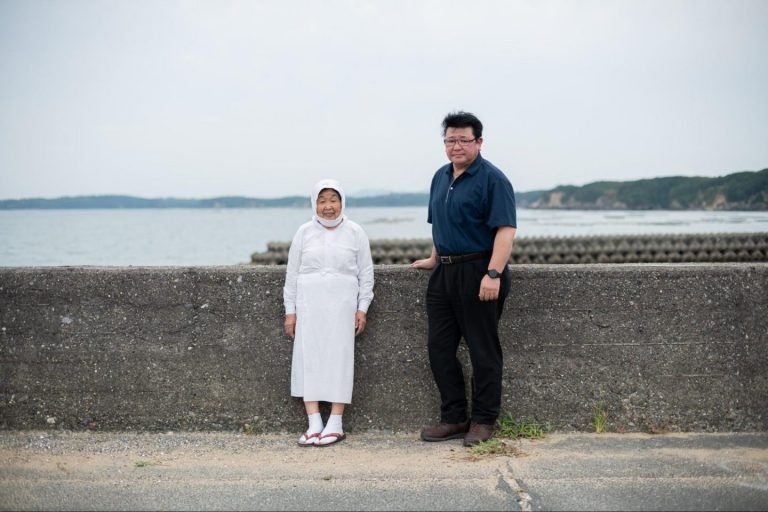
The Ise-Shima region is a scenic area where the sunshine pours down on the ria coast of the sea and mountains.
It is also famous as a tourist destination with the Ise Jingu Shrine and the resort town of Kashikojima. In 2019, The divers of Toba and Shima have even been recognized as a Japan Heritage Site by the Agency for Cultural Affairs. With the largest number of ama divers in Toba and Shima, the fishing town of Osatsu in Toba City houses the majority number of them.
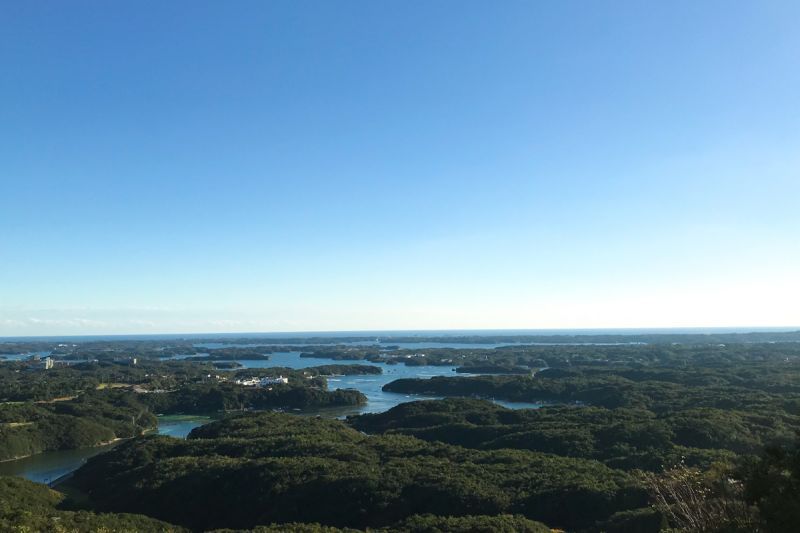
Come support the ama divers! Carry on the cycle of vitality in the region!
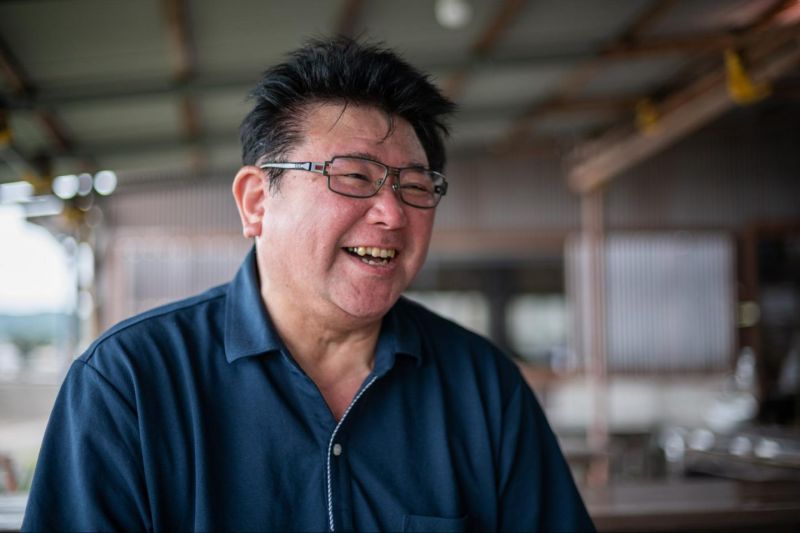
Mr. Kazuhiro Nomura, the president of Hachiman Kamado, is one that runs the ama hut.
Kazuhiro: "I believe that the divers who risk their lives to dive into the sea have power."
Kazuhiro started the Hachiman Kamado business with his mother, Reiko, who is also an ama, or a woman diver. We asked him how it all started.
"I was told that 17 years ago, Toba City launched a project to welcome groups of foreign tourists and let them experience the charm of the local area. That's when they came up with the idea of serving food at the relatively large working ama hut at the end of the cape."
Kazuhiro: "Ama huts are places where it is considered taboo for a diver's husband to enter. The person in charge of Toba City at the time was having trouble finding an ama hut that would accept them and asked me for advice."
Kazuhiro: "At first, I was worried about whether the foreign guests would be happy or not."
He told us an episode that blew away such anxiety.A foreign visitor from North America had worked as a high school teacher and was about to retire. He was looking for hints on how to spend the rest of his life, going on a trip he had never taken or done before. When he came to a working ama hut at the end of the cape and saw ama divers such as Reiko who was older than him swimming 600 meters in the sea and diving 10 meters underwater, he was amazed and impressed by their power and hospitality.
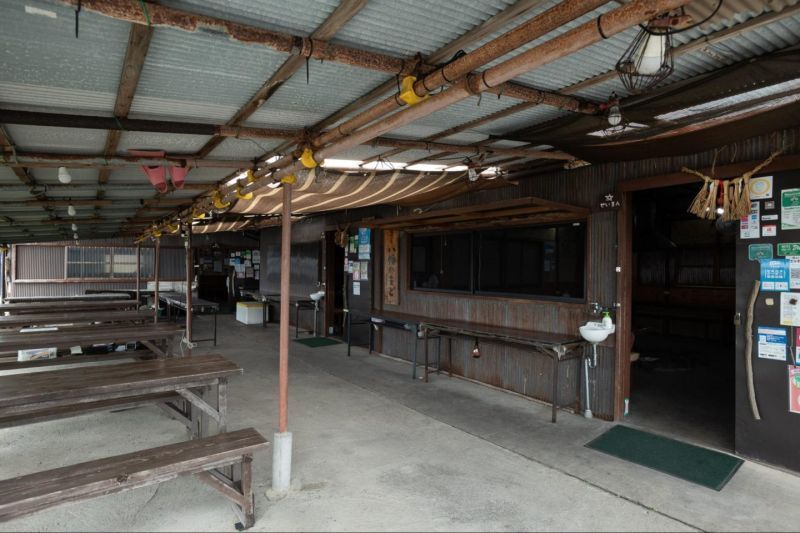
Kazuhiro: "While the tourist huts were relocated from the original work huts to Asari Beach (where they are now), visitors have still been writing down their impressions in a notebook since the beginning. Many of the comments were not only about the food but also messages such as "The ama divers gave me strength! I will come again," which I think makes the local ama divers very happy."
Without the Hachiman Kamado, ama divers would have to dive into the sea with the members of the work huts and finish their work by landing the fish. They would never know who, where, and how they look when visitors eat the seafood they have caught.
I wanted to talk to Reiko, who has been promoting the ama culture and working with the local community ever since the launch of the ama hut Hachiman Kamado over 17 years ago.
Kazuhiro: "Reiko-san! Come here for a minute."
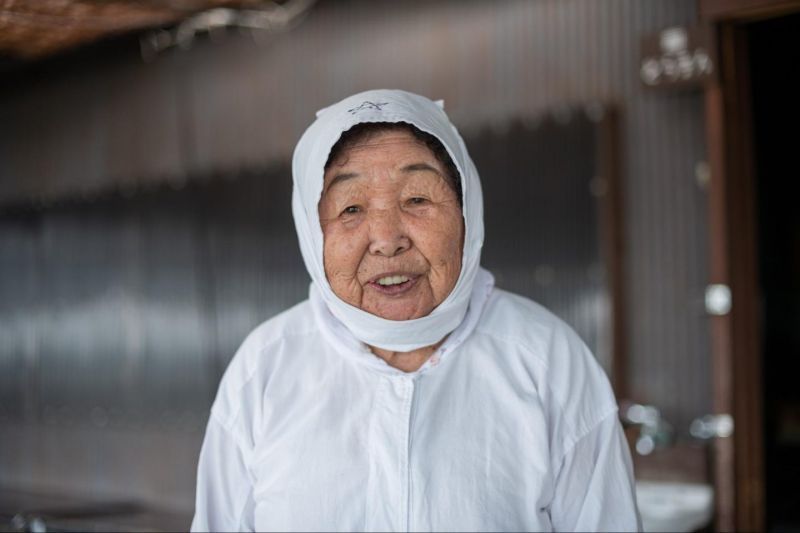
With a charming smile, Reiko told us that she is 90 years old and was an active diver until she turned 80. We asked her about the secret to her health.
Reiko: "I get my energy from the customers."
Meanwhile, Kazuhiro is working on a new initiative.
"I no longer have the anxiety I had when I started the ama hut, wondering if foreigners would be pleased or not. The charm of the proud local area has turned into confidence and certainty through the business."
The pride in the local community has spread to the ama divers as well.
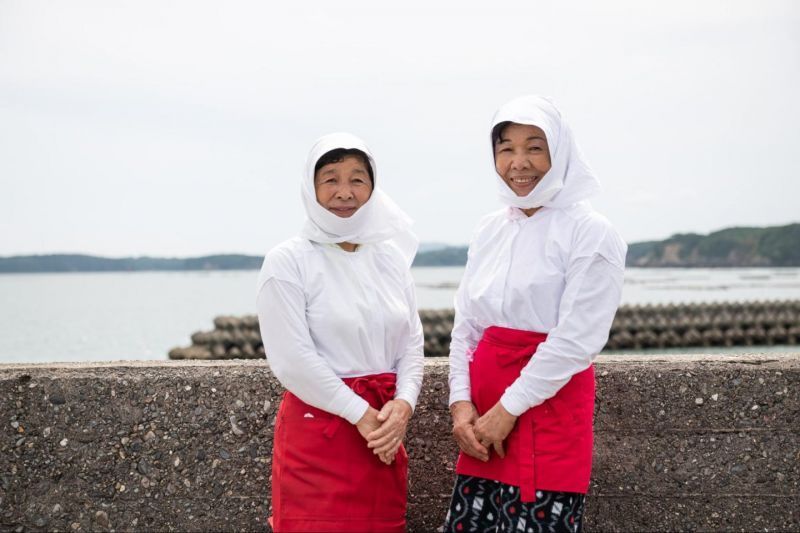
▲Left: Ms. Shimoko Matsumoto, Right: Ms. Mitsue Okano
At Hachiman Kamado, an ama hut, there are 16 women ama divers working and offering hospitality. Today, we have asked Shimoko and Mitsue, who are both active divers, to cook for us. But first, let me tell you about their daily life as divers.
At 8:00 a.m., the ama divers head for their work hut at the end of the cape to prepare for fishing which begins at 9:00 a.m. and lasts about an hour and a half, ending at around 11:00 a.m. Afterward, we head to the working ama hut to warm up, have rice, and enjoy coffee with our friends.
This morning, they dove into the sea again and landed abalones, which are in season and said to be thicker this year.
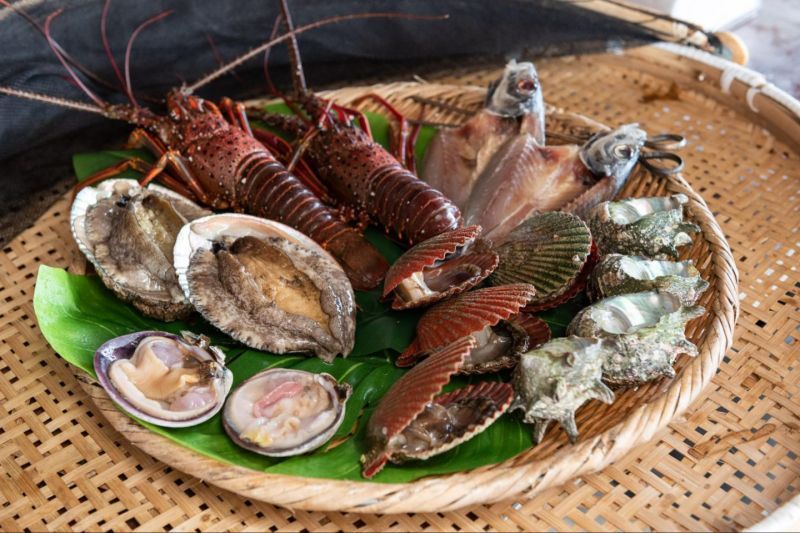
Shimoko: "These abalones are very fat, just like us. Ha ha ha!"
The cheerful voices of the ama divers echo in the summer sea.
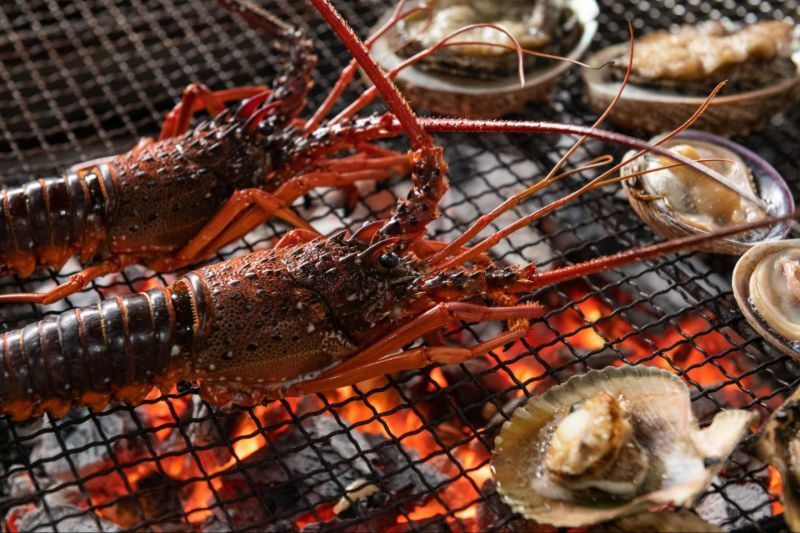
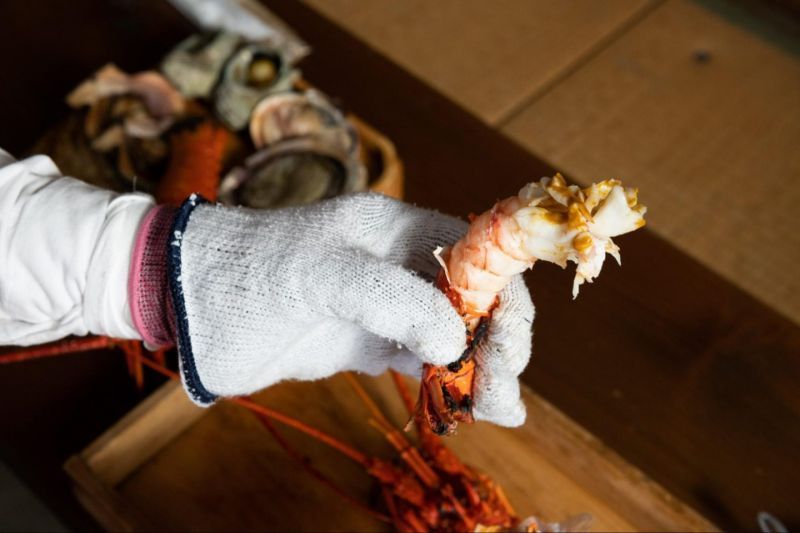
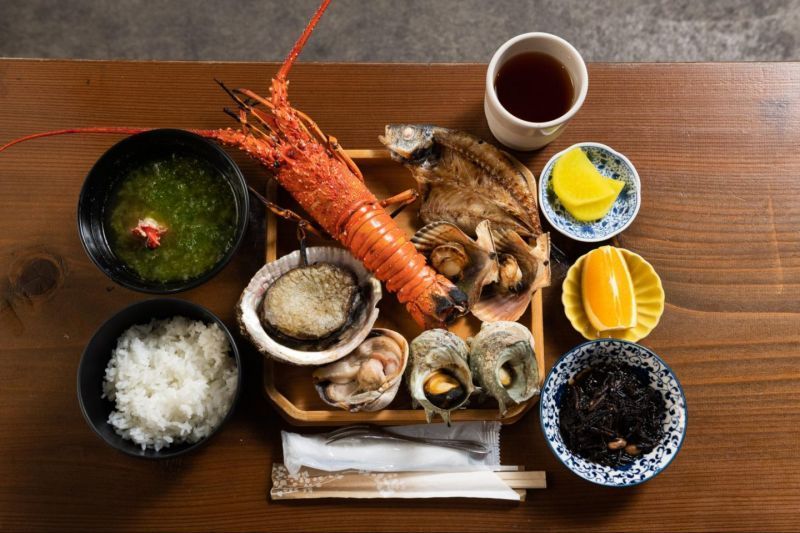
▲Lobsters in the broth of miso soup.
In addition to abalone and other shellfish, ama divers are also responsible for catching hijiki, wakame seaweed, and amakusa.
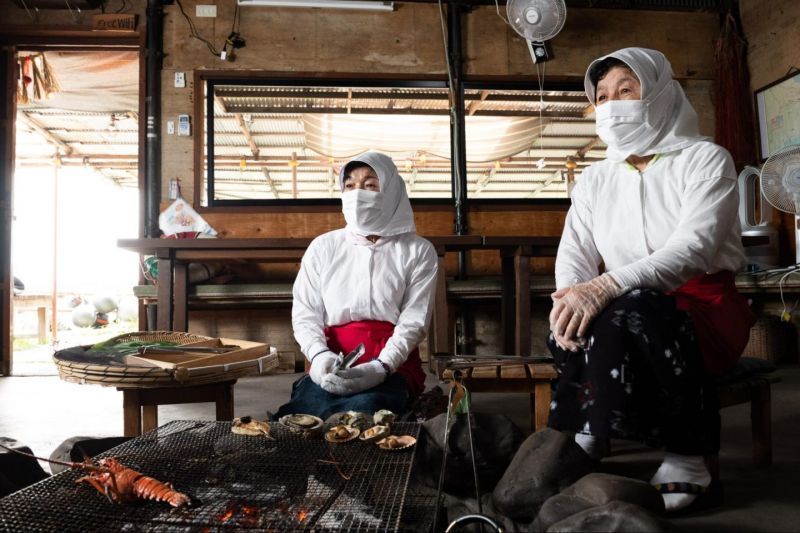
Mitsue: "When I was little, I used to enjoy the agar that my mother made from amakusa. Diving into the sea has been a favorite pastime of mine since childhood. I learned what I do on my job from my mother, who was an ama diver. That's why there is no line between being an ama diver and a woman. In this area, there is a saying that goes, 'If you can't dive, you can't get married.'"
In this area, the job of an ama is economically important. I wonder what significance the Hachiman Kamado women's hut has for the two women who continue to work as ama divers today.
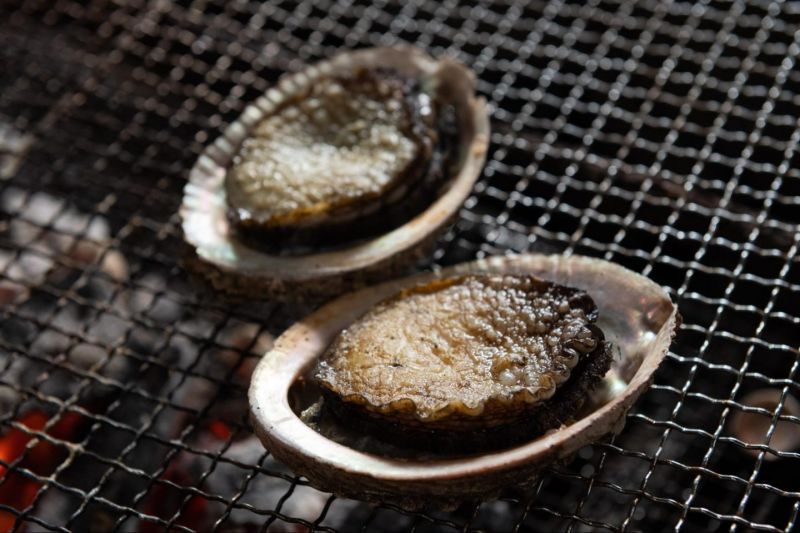
▲They are always happy when they catch a big abalone.
Mitsue: "It's been really fun to talk and connect with many people who come here. Through my job as a diver, I hope to let people understand the beauty of the sea and the richness of nature in Toba."
The Ise-Shima Area embodies the culture of Japan as an island nation.
I have heard that from a foreigner's point of view, they had a strong impression of Japan as a land of the sea. We live in an island nation, Japan, where the culture of living with the sea is deeply rooted. Abalones and Ostrea oysters have been discovered from the Shirahama shells of the Jomon era in Toba City, and since these are shellfish that can only be caught by diving, it can be inferred that the ama culture has existed since the Jomon period or even earlier. The practice of divers diving into the sea is a form of wisdom inherited from our ancestors to avoid the over-exploitation of resources and is also the very spirit of the Japanese people who have a sense of reverence for nature. In the Ise-Shima region, where such a culture still lives on, Amaterasu, the god of the sun, resides and continues to bring about the blessings of nature.
The ama divers who dive into the sea and live together with nature receive the benefits of the power of the sun and nature every day. Those of us who are energized by the divers are able to return the power by interacting with them.
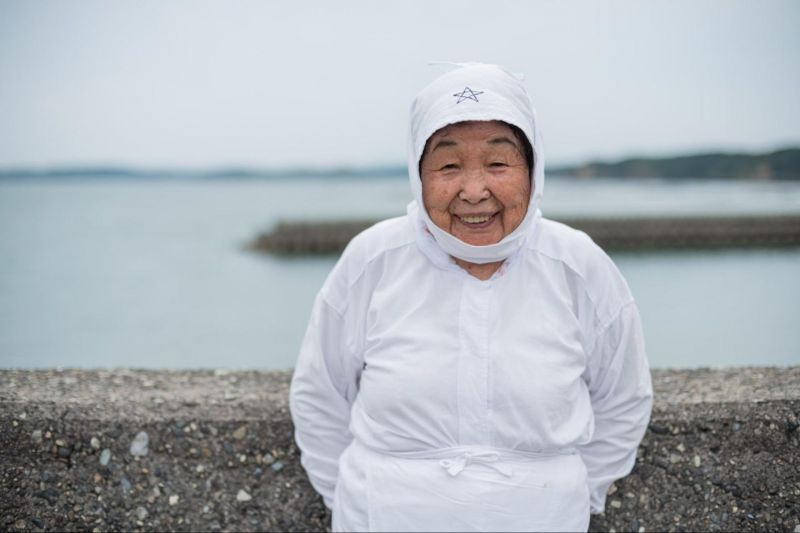
Such a cycle of energy continues to thrive in Ise-Shima today.
Eat to nourish your body, and talk to your heart to satisfy your soul.
Ama hut Hachiman Kamado
819 Osatsucho, Toba City, Mie Prefecture 517-0032
Hachiman Kamado Reservation Information Center TEL 0599-33-1023
Facebook https://www.facebook.com/amahuthachiman
Covering day: August 11, 2021
Written: Yusuke Murayama (WEB magazine OTONAMIE)
Photo: Yutaka Matsubara (https://matsubara-yutaka.com/)
This article is a translation and reprint of the content created by the project of Departmentof Agriculture, Forestry and Fisheries, Mie Prefectural Government.
Original article: https://www.sato.pref.mie.lg.jp/feature_news/